#construction project tracking software
Explore tagged Tumblr posts
Text
Why the Construction Industry Needs Project Management Software
In today’s fast-paced construction industry, managing multiple projects, coordinating teams, and ensuring timely completion can be challenging. Without the right tools, construction firms risk delays, budget overruns, and miscommunication. This is where project management software for the construction industry plays a vital role. Implementing construction job management software can streamline operations, improve efficiency, and boost profitability.
Benefits of Project Management Software in Construction
Construction companies face unique challenges such as site coordination, resource allocation, compliance requirements, and budget control. A construction project tracking software can address these challenges by offering key benefits such as:
1. Enhanced Project Planning and Scheduling
Construction projects involve multiple tasks, deadlines, and dependencies. Project management software for the construction industry provides scheduling tools that help project managers allocate tasks efficiently, set realistic deadlines, and monitor progress in real time.
2. Better Communication and Collaboration
One of the biggest hurdles in construction is maintaining clear communication among teams. A construction job management software allows seamless communication between on-site workers, contractors, architects, and clients. Features like real-time updates, document sharing, and centralized messaging reduce miscommunication and delays.
3. Real-Time Progress Tracking
Keeping track of construction projects manually can lead to errors and inefficiencies. Construction project tracking software enables real-time monitoring of every phase, ensuring that milestones are met and problems are addressed promptly.
4. Improved Budgeting and Cost Control
Construction projects often go over budget due to unforeseen issues. Using construction job management software, firms can track expenses, manage invoices, and analyze financial reports, ensuring that projects stay within budget.
5. Resource Management Optimization
Efficient use of materials, equipment, and labor is crucial for profitability. Project management software for the construction industry offers tools for resource tracking, helping managers allocate resources effectively and prevent wastage.
Features to Look for in Construction Project Management Software
When selecting a construction job management software, it's essential to consider the following features:
Cloud-Based Accessibility: Enables access to project data from anywhere.
Task Automation: Reduces manual work by automating repetitive tasks.
Integration Capabilities: Seamlessly connects with accounting, procurement, and CRM systems.
Mobile Compatibility: Allows on-site teams to update project status via mobile devices.
Document Management: Provides secure storage for blueprints, contracts, and reports.
How to Choose the Best Construction Project Tracking Software
With numerous options available, selecting the right construction project tracking software depends on your company’s size, project complexity, and budget. Consider software that offers a user-friendly interface, customizable dashboards, and scalable solutions.
Additionally, opt for a vendor that provides excellent customer support and training to ensure smooth adoption. Investing in a reliable project management software for the construction industry can significantly enhance operational efficiency and project outcomes.
Conclusion
The construction industry is highly competitive, and staying ahead requires efficient project management. Implementing construction job management software or construction project tracking software ensures streamlined operations, reduced costs, and better project visibility. Choosing the right software can revolutionize how your construction company manages projects, ultimately leading to greater success and profitability.
By leveraging advanced project management software for the construction industry, companies can mitigate risks, enhance collaboration, and ensure project completion on time and within budget. Now is the time to invest in the right tools and take your construction business to the next level.
#construction project management tools#construction project management software#best construction software#construction project tracking software#construction project management software for small business
0 notes
Text

Revolutionizing Project Management with the Project Monitoring Portal
In the dynamic world of project management, staying on top of every aspect of a project is crucial for success. The Project Monitoring Portal, powered by PPMS Software, offers a comprehensive solution for managing the entire project lifecycle with unparalleled efficiency and precision. From smarter planning to real-time progress tracking, this web-based application is designed to streamline project management processes, ensuring projects are completed on time and within budget.
https://www.cyberswift.com/in/products/csr-management-software
#it based project monitoring system#project monitoring system#progress monitoring system#work progress monitoring system#project progress monitoring system#web based project monitoring system#project monitoring software#best project tracking softask tracking system#engineering project tracking software#project tracking system#project management software with time tracking#construction project tracking software#tool tracking system for construction#time and project tracking software#simple project tracking software#project management tool with time tracking
0 notes
Text
Staff Management Software
Prestart’s Staff Management Software streamlines scheduling, enhances communication, and simplifies payroll processing. It offers real-time performance tracking, ensures compliance with labor laws, and empowers employees with self-service features, boosting overall productivity and satisfaction.
#prestartr#fleet management software#project cost tracking software#civil construction management software
2 notes
·
View notes
Text
Middle East and Africa Construction Management Software Market Growth: Share, Value, Size, Scope, and Insights
"Middle East and Africa Construction Management Software Market Size, Share, and Trends Analysis Report—Industry Overview and Forecast to 2029
The MEA Building Project Software Market is undergoing significant transformation, driven by technological advancements, shifting consumer preferences, and increasing industry investments. According to top market research companies, the Digital Construction Management Market is witnessing rapid growth as businesses prioritize innovation and efficiency. Companies in the Smart Construction Software Market are focusing on data-driven strategies, digitalization, and automation to enhance productivity and meet rising demand. The Construction ERP Software Market is also seeing strong momentum due to regulatory support and evolving industry standards. Leading players in the BIM Software Market are leveraging advanced analytics and market intelligence to stay ahead of competitors, making the market highly dynamic and competitive.
The Middle East and Africa Construction Management Software Market is poised for significant growth, with a market outlook highlighting substantial growth potential driven by emerging opportunities in key sectors. This report provides strategic insights, demand dynamics, and revenue projections, offering a comprehensive view of the future landscape, technology disruptions, and adoption trends shaping the industry’s ecosystem evaluation. According to Data Bridge Market Research Data Bridge Market Research analyses that the Middle East & Africa construction management software market is expected to reach the value of USD 653.96 million by 2029, at a CAGR of 6.0% during the forecast period.
We believe understanding the Construction Analytics Market requires more than just numbers; it's about grasping the human element. Our research dives into the motivations and behaviors driving the Middle East and Africa Construction Management Software Market, uncovering the stories behind the data. We're observing how diverse factors are influencing the Project Tracking Software Market, from regulatory changes to emerging trends. This approach allows us to provide a comprehensive picture of the Middle East and Africa Construction Management Software Market, equipping businesses with the knowledge to make strategic decisions. We focus on delivering insights that are relevant and actionable within the current context of the MEA Infrastructure Tech Market. The current state of the Middle East and Africa Construction Management Software Market shows interesting trends. We want to provide clear information on the Construction Planning Software Market. The dynamic nature of the Cloud-Based Construction Software Market is always changing.
Our comprehensive Middle East and Africa Construction Management Software Market report is ready with the latest trends, growth opportunities, and strategic analysis. https://www.databridgemarketresearch.com/reports/middle-east-and-africa-construction-management-software-market
**Segments**
- **Product Type**: Construction management software in the Middle East and Africa market is segmented into cloud-based software and on-premise software. Cloud-based software is witnessing significant growth due to its cost-effectiveness, scalability, and ease of access from anywhere with an internet connection. On-premise software, while traditional, is losing popularity as companies seek more flexible and collaborative solutions.
- **End-User**: The construction management software market in the Middle East and Africa is segmented based on end-users, including contractors, subcontractors, architects, engineers, and others. Contractors are the primary users of construction management software, as they rely on these tools for project planning, scheduling, resource allocation, and budget management. Subcontractors also use these software solutions to streamline communication and coordination with the primary contractors.
- **Function**: The functionality segment of the Middle East and Africa construction management software market includes project management, cost management, building information modeling (BIM), scheduling, and others. Project management software is crucial for overseeing tasks, tracking progress, and ensuring project milestones are met. Cost management tools help in budgeting, expense tracking, and financial reporting. BIM software enables better collaboration and visualization of construction projects, leading to fewer errors and improved efficiency.
**Market Players**
- **Procore Technologies, Inc.**: Procore offers a comprehensive construction management platform that includes project management, quality and safety control, and financial management tools. The company has a strong presence in the Middle East and Africa market, catering to the construction industry's diverse needs.
- **Autodesk, Inc.**: Autodesk provides BIM software solutions that are widely used in the construction sector for 3D modeling, visualization, and collaboration. Its software offerings enhance project efficiency and productivity, making it a key player in the Middle East and Africa construction management software market.
- **Oracle Corporation**: Oracle offers a range of construction management software solutions that focus on project planning, scheduling, and cost control. The company's integrated platform enablesOracle Corporation is a significant player in the Middle East and Africa construction management software market, offering a range of solutions focused on project planning, scheduling, and cost control. Oracle's integrated platform enables construction companies to streamline their processes, enhance collaboration among project stakeholders, and improve overall project efficiency. With increasing digitalization and the adoption of advanced technologies in the construction industry, Oracle's software solutions provide companies with the tools they need to stay competitive and meet the evolving demands of the market. The company's emphasis on project planning allows construction firms to create detailed project schedules, allocate resources effectively, and monitor progress in real-time, ensuring that projects are completed on time and within budget.
In addition to project planning, Oracle's construction management software includes robust scheduling tools that enable companies to create and manage project timelines efficiently. By utilizing advanced scheduling features, construction firms can optimize resource utilization, identify potential bottlenecks, and adapt quickly to changes in project scope or requirements. This proactive approach to scheduling helps companies minimize delays, avoid costly overruns, and deliver projects more predictably, enhancing overall customer satisfaction and reputation in the market.
Cost control is another critical aspect of Oracle's construction management software suite, allowing companies to monitor project expenses, track budgets, and generate accurate financial reports. By providing real-time visibility into project costs and financial performance, Oracle's software enables construction firms to make informed decisions, identify cost-saving opportunities, and improve overall profitability. With the ability to integrate cost control data with project planning and scheduling functionalities, companies can achieve greater operational efficiency, reduce financial risks, and ensure long-term business sustainability in the competitive Middle East and Africa construction market.
Moreover, Oracle's construction management software solutions leverage advanced analytics and reporting tools to provide companies with valuable insights into their projects' performance, trends, and areas for improvement. By analyzing key performance indicators, identifying inefficiencies, and benchmarking against industry standards, construction firms can drive continuous improvement, enhance project quality, and deliver better outcomes for their clients. Oracle's focus on dataOracle Corporation's stronghold in the Middle East and Africa construction management software market is underpinned by its comprehensive suite of solutions that cater to the evolving needs of construction companies in the region. The company's focus on project planning, scheduling, and cost control aligns well with the industry's demands for efficient project delivery, streamlined processes, and improved project outcomes. Oracle's integrated platform enables construction firms to benefit from enhanced collaboration among stakeholders, streamlined processes, and improved efficiency across project lifecycles.
One of the key strengths of Oracle's construction management software lies in its emphasis on project planning capabilities. By providing construction companies with tools to create detailed project schedules, allocate resources effectively, and monitor progress in real-time, Oracle empowers firms to ensure projects are delivered on time and within budget. The software's advanced scheduling features enable companies to optimize resource utilization, identify bottlenecks, and adapt quickly to changes, thereby minimizing delays and enhancing project predictability.
Cost control is another critical aspect addressed by Oracle's software suite. The ability to monitor project expenses, track budgets, and generate accurate financial reports in real-time provides construction companies with the visibility and insights needed to make informed decisions, identify cost-saving opportunities, and improve profitability. Integration of cost control data with project planning and scheduling functionalities ensures operational efficiency and reduced financial risks, crucial for long-term sustainability in the competitive Middle East and Africa construction market.
Oracle's construction management software solutions stand out for their use of advanced analytics and reporting tools, providing valuable insights into project
The market is highly fragmented, with a mix of global and regional players competing for market share. To Learn More About the Global Trends Impacting the Future of Top 10 Companies in Middle East and Africa Construction Management Software Market : https://www.databridgemarketresearch.com/reports/middle-east-and-africa-construction-management-software-market/companies
Key Questions Answered by the Global Middle East and Africa Construction Management Software Market Report:
How does the market share of leading companies compare in the Middle East and Africa Construction Management Software Market?
What is the scope of applications for LSI technology across various industries?
How is the demand for LSI products shifting across different regions and sectors?
What are the primary growth factors driving the expansion of the Middle East and Africa Construction Management Software Market?
What is the market value projection for the Middle East and Africa Construction Management Software Market over the next decade?
What are the emerging opportunities for new entrants in the Middle East and Africa Construction Management Software Market?
What do industry statistics reveal about investment trends in the Middle East and Africa Construction Management Software Market?
What are the latest industry trends influencing the adoption of LSI technology?
How does the industry share of small vs. large companies compare in the Middle East and Africa Construction Management Software Market?
What are the key revenue drivers impacting the profitability of Middle East and Africa Construction Management Software Market companies?
Browse More Reports:
https://www.databridgemarketresearch.com/reports/global-bioresorbable-polymers-markethttps://www.databridgemarketresearch.com/reports/north-america-container-security-markethttps://www.databridgemarketresearch.com/reports/global-electron-microscope-markethttps://www.databridgemarketresearch.com/reports/middle-east-and-africa-fleet-management-markethttps://www.databridgemarketresearch.com/reports/global-lactose-free-market
Data Bridge Market Research:
☎ Contact Us:
Data Bridge Market Research
US: +1 614 591 3140
UK: +44 845 154 9652
APAC: +653 1251 982
✉ Email: [email protected]
Tag
Middle East and Africa Construction Management Software Market Size, Middle East and Africa Construction Management Software Market Share, Middle East and Africa Construction Management Software Market Trend, Middle East and Africa Construction Management Software Market Analysis, Middle East and Africa Construction Management Software Market Report, Middle East and Africa Construction Management Software Market Growth, Latest Developments in Middle East and Africa Construction Management Software Market, Middle East and Africa Construction Management Software Market Industry Analysis, Middle East and Africa Construction Management Software Market Key Players, Middle East and Africa Construction Management Software Market Demand Analysis"
#MEA Building Project Software Market#Digital Construction Management Market#Construction ERP Software Market#BIM Software Market#Smart Construction Software Market#Construction Analytics Market#Project Tracking Software Market#MEA Infrastructure Tech Market#Construction Planning Software Market#Cloud-Based Construction Software Market
0 notes
Text
#ERP solution for contractors#Contractor management software#Construction ERP software#All-in-one ERP for contractors#Best ERP for construction industry#Project management ERP for contractors#Contractor operations software#ERP for general contractors#ERP for specialty contractors#Streamlining contractor operations#Best ERP software for construction contractors#ERP for managing contractor bids and projects#Cloud-based ERP for construction industry#How to streamline contractor operations with ERP#ERP solution for efficient project management#Contractor job tracking software#Financial management ERP for contractors#AI-powered ERP for contractors#Real-time project tracking ERP#Contractor workforce management ERP
1 note
·
View note
Text
Why Your Construction Projects Need O Construction Project Management Software?
In this video, we explore the key reasons construction teams turn to project management software to simplify and automate challenging tasks. From real-time collaboration to resource management and budget tracking, see how the right tools can transform the way you manage construction projects.
Check our Page: https://www.orangescrum.com/solutions/oconstruction
#construction management#project management software#construction software#construction#construction tools#task management#project tracking#resource management
0 notes
Text
Construction Management Software: A Comprehensive Overview
Construction management software (CMS) is a vital tool for modern construction projects, enabling professionals to manage various aspects of project execution efficiently. With the construction industry facing increasing complexities and demands, CMS has become essential for improving productivity, reducing costs, and enhancing collaboration among stakeholders. Courtesy: CRM.org Key Features of…
#cloud-based construction software#construction efficiency tools#construction industry software#construction management software#construction project planning#construction scheduling software#document management systems#field management solutions#mobile construction apps#project management tools#project tracking software#real-time collaboration tools#resource allocation software#risk management in construction
0 notes
Text
Navigating Labor and Timeline Challenges: Strategies for Success
In the dynamic landscape of project management, encountering labor and timeline obstacles is not uncommon. These challenges can impede progress, strain resources, and jeopardize the success of a project. However, with careful planning and strategic approaches, project managers can effectively surmount these hurdles. In this article, we will explore various strategies to overcome labor and timeline obstacles, ensuring the smooth execution of projects.
Contents
Understanding Labor and Timeline Obstacles
Common Issues Faced in Project Timelines
The Impact of Labor Obstacles on Project Efficiency
Strategies for Efficient Project Management
Utilizing Advanced Estimating Software
Team Collaboration and Communication
Overcoming Labor Challenges
Implementing Technology for Task Automation
Resource Optimization
The Role of Estimating Software
Definition and Significance
How Estimating Software Aids in Project Planning
Challenges in Implementing Estimating Software
. Addressing Perplexity in Project Management
The Role of Adaptability in Overcoming Challenges
Burstiness in Project Management
Utilizing Bursts of Productivity
Engaging the Reader with Analogies
Keeping it Brief and Simple
Importance of Concise Project Plans
VIII. Active Voice in Project Communication
Impact of Active Voice in Conveying Urgency
Rhetorical Questions for Reflection
Prompting Readers to Evaluate Their Project Management Strategies
FAQs
What are the key challenges in project timelines?
How does technology aid in overcoming labor challenges?
Are there specific success stories with estimating software?
Why is adaptability crucial in project management?
How can project managers enhance communication using the active voice?
Understanding the Challenges
Robust Planning and Scheduling
The foundation of successful project management lies in comprehensive planning and scheduling. By developing a detailed project plan, including realistic timelines and resource allocations, project managers can anticipate potential challenges. Regularly updating and revising the plan as the project progresses allows for better adaptation to unforeseen obstacles.
Risk Management
Anticipating and addressing risks is a critical aspect of overcoming labor and timeline challenges. Implementing a robust risk management strategy involves identifying potential issues, assessing their impact, and developing contingency plans. By proactively managing risks, project managers can minimize disruptions and ensure that the project stays on track.
Agile Methodology
In today’s fast-paced business environment, embracing agile methodologies can be a game-changer. Agile allows for flexibility in project execution, enabling teams to adapt to changing circumstances efficiently. Short iterations, frequent feedback loops, and continuous improvement contribute to a more resilient project framework, better equipped to handle unexpected obstacles.
Resource Optimization
Collaboration and Communication
Clear and open communication is essential for tackling labor and timeline obstacles. Establishing transparent communication channels within the project team and stakeholders facilitates the identification of issues at an early stage. Regular team meetings, progress reports, and feedback sessions create a collaborative environment that fosters problem-solving and innovation.
Technology Integration
Leveraging technology can significantly enhance project efficiency. Project management tools, collaboration platforms, and automation software can streamline processes, improve communication, and provide real-time insights. Integrating technology into project workflows helps reduce manual errors and accelerates the pace of work.
Continuous Monitoring and Adaptation
Monitoring project progress in real-time allows project managers to identify deviations from the plan promptly. By continuously tracking key performance indicators (KPIs) and project metrics, teams can make data-driven decisions and implement corrective actions as needed. This proactive approach ensures that the project remains aligned with its objectives.
Training and Skill Development
Conclusion
Labor and timeline obstacles are inevitable in the realm of project management, but with the right strategies in place, they can be effectively managed. Robust planning, risk management, agile methodologies, resource optimization, collaboration, technology integration, continuous monitoring, and skill development are all essential components of a successful project management approach. By adopting these strategies, project managers can steer their teams through challenges, ensuring the timely and successful completion of projects.
Tagged:
Labor and Timeline Challenges ,
project management software ,
project management ,
Understanding Labor and Timeline Obstacles ,
construction management software ,
software for project tracking ,
construction and project management software
Contact us :
RELATED POSTS
How Do I Choose the Best Construction Company in My Local Area?
How to Ensure the Safety of Your Construction Workers
How Much Does an Architect Cost in 2024?
#Labor and Timeline Challenges#project management software#project management#Understanding Labor and Timeline Obstacles#construction management software#software for project tracking#construction and project management software
0 notes
Text
AU Jervis Tetch
Me and @dariusblake have discussed how we'd write our own Batman / DC TV or comic series and each individual character that would appear in it. Tetch being among them. At his core, Tetch is someone deeply reluctant to stay in the real world and would first seek to create his own sanctuary (his Wonderland) like a Hikikomori before even considering developing a mind control device. Which would be later on, when he feels it's the only real way to feel in control of his life which - up to that point - slowly fell to pieces. He'd be one of the earliest antagonists sent to Arkham while it's still a respected institution genuinely there to help mentally ill and vulnerable people get back on their feet, before Arkham (under Strange's management) is effectively turned into a prison for super-criminals.
I'm also of the mind that Tetch would look very average, not a pretty boy or a decrepit leprechaun. Maybe on the shorter side and seeming shorter by the way he haunches both to make himself smaller and because he himself feels small with his cripplingly low self esteem after years of being put down and treated like he didn't belong. Creating Wonderland as a place where he does finally belong, though still feeling stuck behind the looking glass unable to reach through it for company. Isolated in his escapist safe haven.
Like in the animated series, Tetch would work in tech with a grant from the Wayne foundation, but not on a project to "enhance the brain's potential". Instead to make the neural / Brain-computer interface (BCI) of a more cost-effective mind-controlled prosthesis. Something which would go on to be used in Gotham's main hospital for patients with amputations and limb-paralysis. The focus being on stimulating motor function and sensory input. At home he'd try to translate that same BCI for simulating sensation and motion (like lucid dreaming, disconnecting is like awaking in the midst of REM sleep) in a virtual landscape (basically an especially immersive VR software akin to Sword Art Online's nerve gear) dubbed "WonderOS" and his pet project running on it called "Wonderland".
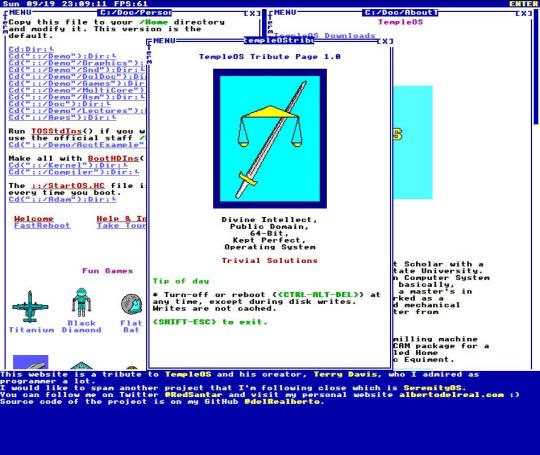
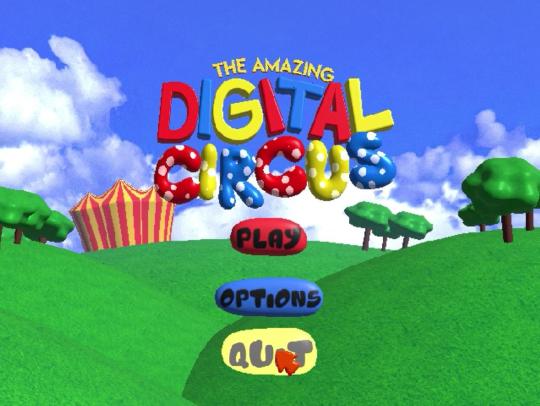
Less a direct recreation of Wonderland from Lewis Carol's novels and more his personal sandbox to tweak and enjoy in his own time. Although its only user, Tetch put meticulous detail into his avatar that no one would likely see. Standing tall and proud with a top hat and bow tie. His smile charming, rather than unnerving. He'd always manage to overdress no matter the occasion in real life, so it felt fitting to extend that habit here too. With so little going on in his life outside of his job, what started as a fun side-project soon encompassed all of his free time. Progressively losing his interoception the more he becomes engrossed in his pet-project. Easily losing track of time to the point of forgetting to sleep, eat or drink, or would fall asleep in the sandbox and be disorientated whenever he'd wake still wearing the headset.
Still, he'd always disconnect eventually. Each time hit like a worse hangover than the last. His shortening time spent in the real world only existing to fuel himself for a longer expedition into his expanding digital world. That is until he'd exhausted all its mechanics and NPC interactions. By now, adding more felt hollow. He'd know exactly what they'd say anyway so why bother? The comforting predictability of the oasis he'd constructed started showing its cracks, or rather it could no longer obscure what cracks had been there all this time. The loneliness... the isolation. When was the last time he spoke to a real person, even at work?
Frankly it was always hard to know what to talk about. He'd tried pitching Wonder OS at work before, garnering minimal interest at best. Like most of his ideas. It always seemed like any attempt to make conversation ended abruptly with no explanation. Who would want to spend time with him in the virtual world if people never wanted to do so in the real one? No, if he wanted to add more player characters he'd have to reach out a different way.
For all his difficulties making friends in the real world, Tetch accrued a fair few online. He'd originally used the forums to post tech support tips, gush about his favourite books, and provide updates about Wonder OS' development to mixed reception. Some genuine interest arose, so when the time came to test Wonderland's "multiplayer mode" there were already a handful of people eager to test it within an hour of the announcement's upload. He'd had about ten additional headsets he'd built for multiplayer mode ready to post and was willing to make more but for now he happily sent out the initial batch. Specially made to not include the admin privilege of being able to log off. He would get to dictate if or when they leave and, well, he cannot guarantee they'll be back so it's best not to give them the option.
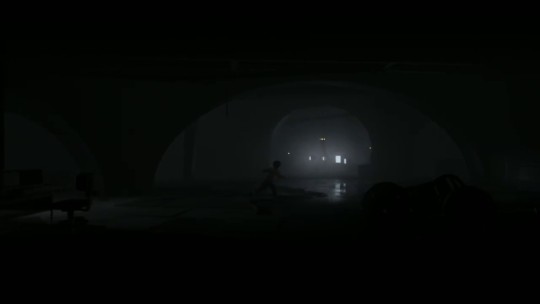

Tetch's performance at work may have been deteriorating before, but now his complete absence was noticed enough to garner a pink slip. One which never arrived. While Tetch's absence may have been more an annoyance to his colleagues that hadn't yet realised how much they leaned on him to get things done until now, the people he'd roped into being his captive audience were missed far sooner. Although they were found soon after their missing person cases were opened (being stuck at home), it only raised more questions. When someone tried yanking off one of their headsets, they were in a catatonic state - still partially in Wonderland.
The escalation from a missing persons case to some sort of hostage situation lead to the cases being grouped together and them entering Batman's radar. A common link was a. the headsets and b. the return address - which directly led back to Tetch. Most of the users hadn't recycled the packaging of their hardware before putting it on, making it easy to find. It's a good thing too, since no one (not even Tetch, who is the only one actually able to leave) has left Wonderland for a full week by the time Batman's on his trail. Too much longer and they'd keel over from neglecting to eat or drink.
Expecting a fight and some nefarious hostage scheme (as with the mob bosses he's faced thus far), Batman is shocked to find not a mastermind controlling a flurry of monitors, but someone rigged to their headset just like the other hostages. His apartment was in a shoddy state. Cables strewn about the floor haphazardly like mangrove roots in a swamp, the air stale and warm from days worth of heat emanating from the hardware that dominated the room he was found in. Curtains shut and dusty, untouched for what must have been months. Among the cables were tubes, an IV drip? Did Tetch plan ahead to make sure he could survive indefinitely rigged up to whatever he'd made?
After inspecting the computer the headset was connected to, Batman forcefully overrides Tetch's admin privileges and logs the hostages off. That alone seemed to stir something, like Tetch was in the midst of a night terror, which grew into a full-blown, panicked breakdown when Batman pulled his headset off. Shaking like a leaf, hands clasping his head as he sank from his chair to the floor. Honestly Batman doesn't really know what to do. Up until now he'd cracked down on Gotham's crime families who all put up a fierce fight, but this... is different. Still, it seems best to bring him in, if only to get him out of this dingy apartment and figure out where to go from there.
The GCPD aren't sure how to prosecute him. Would what he did be legally considered kidnapping? Or any other crime? He's kept in a holding cell while they fumble for a specific crime to charge him with. With nothing landing, he's instead sent to be a long-stay patient at Arkham (which at this point is a genuine respected psychiatric hospital for regular civilian patients) for both evaluation and therapy. They confiscated the hardware he'd used to run Wonder OS and sent it in for analysis, though couldn't make heads nor tails of a lot of his work.

Honestly being "sentenced" to free therapy really wasn't much of a punishment at all! Still took some time to adjust to the cold white brick walls, overly sanitised surroundings and the inescapable brightness both natural and not that did his head no favours. Haven't they heard of curtains? Until therapy he hadn't realised how infrequently he spoke out loud, stammering with nerves and the unfamiliarity of it. Like his mouth had forgotten what to do. Despite it all he was grateful for the company each session brought, even if it was for a prescribed purpose. Each chat feeling more sincere than any he'd had in years, to the point that his heart sank a little as each session came to a close. He hadn't really drank tea before coming here. Coffee, especially on days he'd forgotten to really sleep working all night on Wonder OS, was his go to, but a switch might be in order. Been a while since he last felt this calm. Calm enough that even his stammer was beginning to fade with the help of some speech therapy alongside his normal sessions.
The tea and kind words warming him to the idea that maybe the world isn't so scary and that he might even have a place in it. After a year or so of progress, the staff agreed to release him on probation. Pretty difficult to build a social support network while cooped up in an asylum, so they thought it best to give Tetch the opportunity to go out and meet new people. With no real support network to go back to, he'd really be starting from scratch like a tourist. Not the safest idea in Gotham, so they pointed him towards a few clubs and support groups first as a good starting point.
Of course, he went with the book club. Barely saying a word for the first few meetings, what confidence he was emboldened with upon release was slightly dampened by the reality of actually having to put himself out there. Truth be told, a few of the club's members recognised Tetch from his "Wonderland" incident a year ago and those that did make a concerted effort not to sit next to him, not that he was especially keen to initiate conversation either. That was until the week's topic turned to Alice in Wonderland, at the suggestion of one such clued-in member. As they'd suspected, Tetch perked right up, brimming with energy to discuss it!
The sudden shift in gears was pretty jarring, but one that people warmed up to. Though he'd still mainly talk about the story and occasionally let slip about aspects of his passion project (not realising it made more people clock where they'd heard of him from), it opened the door for more general conversation. His excited friendliness still on the jittery side, one of the members felt a little bad about how clearly anxious he was and offered to help him feel more welcome.
Giving advice on what helped him, including teaching Tetch how to microdose, which they preferred to take by brewing magic mushrooms into tea. And it helped! Becoming part of Tetch's morning routine, it's the closest he's felt to being himself back in Wonderland since well... you know. Tetch responded well to therapy, making remarkable progress even without medication, so his therapists though it best not to prescribe anything since it wasn't strictly necessary. The difference self-medicating made had Tetch second-guessing their judgement though.
After a few months of settling in, for once Tetch is invited to a social gathering outside of the book club to their annual Christmas do. In his youth as an apprentice lab tech at Wayne Enterprises he hadn't really gone out before. Most alcohol tasted vile to him unless it was disguised by more pleasant things like in a cocktail, not to mention how hard it hit him after barely a few sips felt as unpleasant as it tasted. Even so, he felt in no position to be picky about where they went that night given how flattered his was that they thought to invite him at all!
Most of the bars were fine, but a bit too loud and crowded for his liking. He may be able to cope with people better now he's started having his morning "tea", but it was still a bit overwhelming. That was until they reached one of Gotham's Goth bars. How rare it was for him to finally not feel overdressed! Amidst the buckles and leather waistcoats, lace and striking makeup he, weirdly, fit right in despite his attire being far more colourful than the bar's usual clientele. By the night's end he'd gravitated away from the group he'd come with, making his own fun with new people for the first time in forever. People he'd come to know as friends as he truly started re-building his life better than it was before!


Since his old workplace fired him before Batman linked him with the missing persons and found him, and Arkham's vouching for him didn't get Tetch his job back (especially since they weren't too happy tetch had adapted their BCI for recreational use), Tetch was out of work. That was until Grant Walker reached out, wanting to adapt Tetch's Wonderland to create a virtual theme park and to improve the IRL parks' AR and immersive elements (think the Xbox connect Disneyland game, but actually functional). An opportunity Tetch couldn't pass up, given he'd been struggling to find work since leaving Arkham and was entering an increasingly precarious financial situation.
Since Tetch adapted Wayne Enterprise's BCI they'd help develop into the hardware running Wonder OS, there was some dispute about whether or not his project would be entirely his own IP or if the resources he technically stole to make it could get him in legal trouble. "Fortunately" Walker offered to protect Tetch from any such case, in exchange for Tetch granting Walker the right to use, market and profit from the virtual he'd created Wonderland - which he agreed to. As successful as Walker's ventures so often were, the opportunity to experiment with park ideas without the expense of land or labour seemed too tantilising to pass-up. Not to mention it could be another venue of advertising his existing IPs to people who otherwise couldn't afford to go to the parks themselves.
Initially, the public reception to announcing Wonderland's debut was... mixed. Reviews from playtesters were glowing, and Walker had his team refine the multiplayer headsets Tetch had prototyped into something that could be made and distributed much more cheaply. Still, trust in Tetch's handiwork was minimal at best after what he did, how could they trust he wouldn't just use it to trap more people again? A green tick of approval from an asylum wouldn't be enough to convince people Tetch was sane. Eventually though, a mix of relentless promotion and sanitisation of Tetch's past got Walker the results he wanted and a steady player base grew.
Honestly, Tetch had tried deliberately to avoid going back into Wonderland or doing any work on his old pet project while he was still getting back on his feet. Especially because until he had a reason to return to the real world, he probably never would have. Oh the temptation, especially early on, was gnawing at him as the dread and self-doubt lingered despite all the progress he'd made in therapy. Returning to it now seems... strange. Like staring at an old picture of himself, so detached from how he felt at the time he'd made it. But he needed the money, and was a different person now, right?
By his therapists' orders, Tetch limits his screen-time only to a few hours a day and goes on a walk / runs errands outside for at least an hour every day, to better facilitate chances of meeting new people and to prevent another spiral into self-isolation. The people he used to chat with online, his old "friends" of sorts, weren't exactly keen to keep talking to him anyway after nearly dying of dehydration in his digital cage, so he didn't have much reason to go back online anyway. That is except for one person, though Tetch hadn't realised it. Too busy making a new life out in the world, to notice the hundreds of messages spamming his inbox on every conceivable chatroom he used to frequent.

"Cat" / Caterina Bressi, one of the Bressi mob family that mostly deals in drugs and information, has helped with her family's dealings modernise by data farming and hacking into police devices and those of other mobsters either for blackmail or to sell to other people in Gotham's underworld who need the info for their own schemes. She is bed-bound due to a mix of chronic illnesses that leave her with little strength and energy to do anything, which is partly why she was on the same forums of Tetch and why they related to each other in their isolation. Cat's skills in coding are the only thing keeping her family from seeing her as anything but a liability and she resents being whittled down to her unappreciated usefulness - again, like Tetch was in the lab. She was one of the people who was sent a prototype headset and actually loved every minute in Wonderland and desperately wished to go back once she was "rescued" from it.
She eventually get's back in contact with Tetch and convinces him to restore the old version of Wonderland (not the polished, commercial form it now was under Walker). .Partly out of sympathy and partly due to some difficulties adjusting to his newly formed social life and existance out in public, Tetch is grateful to still have a friend he relates to in ways he can't with his new, more "well-adjusted" friends and ends up spending more and more time with Cat. .Overtime, their friendship morphs into an unhealthy dependancy (moreso Cat depending on Tetch than the other way around) as she begins to isolate him from his newer friend groups.
Eventually, to get away from her responsibilities to her family she insists Tetch use his lab experience with nerve-based prosthetics to help her move again. Both to get away from her family and so they do not narrow her self-worth down to how useful she is to them. Tetch insists she is fine as she is and he can help her without changing her in that way, but eventually caves and makes what would become the basis of this AU's version of the mind control device. Not actually mind-control, but instead stimulating controlled movement of the body similar to how some existing peripheral nerve interfaces work Although the main controls were designed so Cat / the person being moved is the one controlling the motion, it can in theory be connected to another person (have a remote control centre on someone else, as a backup of sorts).
Once completed, Cat begins to tag along with Tetch everywhere he went so she wouldn't be alone even for a minute. Which became an issue when he had to go to work, since Walker was worried about leaks of any new content his team might work on if someone like Cat tagged along with Tetch to work. When Tetch tries to enforce reasonable boundaries and see his newer friends more like before Cat came back into his life (offering to help her make more friends of her own / introduce him to his other friends) she refused and doubled down in her attempts to control his day to day activities.
Defying his therapist's orders, wanting to relive how their old friendship was, she encouraged him to work more on the old WonderOS and give her access to it so she could help him with it too and spend more time in Wonderland again.
Without Tetch's knowledge, Cat steals Tetch's old lab notes and changes the old WonderOS code to be compatible with her peripheral nerve interface's control centre - basically wanting to see if she can fully immerse herself like a ghost in the machine and fully escape her real life. Once Tetch finds out, right before she's about to upload herself, he tries to stop her - worried it might kill her or otherwise go wrong. In the scuffle, Cat falls and Tetch isn't sure if her plan worked or if he'd just accidentally killed her or failed to prevent her death (if her plan killed her). Not sure what to do with the body, he jerryrigs the control centre so he can use it and (once revival fails) ends up trying to evade suspicion (and preserve his sanity) by animating her like she was still alive, trying to rationalise it all.
Given his new friends haven't seen him in a while, a couple days into his descent into madness they visit him. If this was part of an animated series, I would show his descent into madness as an abreviated montage of him going through the motions of grief while mimicking his day-to-day routine with her reanimated corpse weekend at Bernie's style - probably to this song, ending with his friends' knock at the door:
Once he is eventually returned to Arkham (charged with Cat's manslaughter and found with the old headset back on but now "haunted" with Cat's ghost in the machine goding him to stay in Wonderland instead of dreary reality - especially with his return to Arkham once again isolating from his new friends, even as they do try and visit) the doctors think he is hallucinating, but he's not. He just keeps one foot in the escapist realm he created, both in an attempt to deal with his guilt towards what happened to Cat (even if she personally holds no hard feelings and considers what happened an improvement on her old life), and for comfort like he did back before his first admission to Arkham. I like to think of it like Pyro-Vision / an AR WonderOS ("Wonder-Vision") built into his hat that's genuinely painful and distressing to remove.
Tetch's access to his Wonder-Vision varies depending on the management at Arkham. Hugo Strange allows him to use it, but sometimes deliberately removes it - both of which serve to help Strange better understand Tetch (by his behaviour in both circumstances). Under Bolton's management, access to Tetch's Wonder-Vision is strictly prohibited (as with most posessions of the inmates). While still under Hugo's management, however, Cat tries everything in her power to expand her reach across other devices. Including Strange's work computer at Arkham, meddling with his work in her wake (if accidentally). It wasn't long before her seeming sentience was distinguishable from just an irritating computer virus. Strange couldn't help but seize the opportunity to study (and toy with) one of the rare instances of seemingly true artificial intelligence. He manages to trap her in his system through a mix of almost complete isolation from local networks and an aggressive firewall he had one of the security staff code.
Kept like a fairy in a jar, he studied her much like he did Tetch. Their co-dependent friendship based largely on their shared isolation. When one might prove uncooperative, the other might run their mouth in ways that implicated the other. Once studying them separately bore nothing more of note, Strange did exactly what Cat had hoped she'd forever escaped since becoming a ghost in the machine... He re-embodied her. Not with mortal flesh, fortunately, but with something just as infuriatingly restrictive - a pixel pet (robotic toy body with digital interface, like a cross between a tamagotchi / pixel chic and a furby) to keep Jervis company after losing his hat priviages.


That is the gist of things so far! I will update as and when new plot beats and edits come to mind.
#This was only meant to be a quick summary!#Wtf#Hope you like it#Honestly just wanted to focus more on the drawbacks of relying on escapism as a crutch for coping with social isolation#Definitely can't relate!#Sarcasm#I prefer the idea that he's smarter than people appreciate#Hence why he's a lab assistant and not a fully qualified neuroscientist#Also kinda tired of the overused Alice pining so pulled an uno reverse of sorts#Jervis Tetch#batman au
13 notes
·
View notes
Text
Improving Your Work Ethic

I had a meeting with my manager on Friday on three key skills I need to look out for when working. She said being in school/apprenticeship and working in a company are two different situations. There are skills you only learn by working in a team with real-life projects. She mentioned; Work Ethic, Communication and Time Management.
I decided I would talk about each one and give tips that she mentioned and others I found out myself and over searching online. This post will be about improving your work ethic. The advice my manager gave is from a Senior Software Developer's point of view but the advice can be carried over to other industries you work in!

What is Work Ethic?
Work ethic refers to the values and principles that guide how a person approaches their work or responsibilities. It involves having a positive attitude, being diligent, and demonstrating a strong commitment to doing your best.
Imagine that school project you had to complete. Having a good work ethic means that you approach the project with enthusiasm and dedication. It means taking responsibility for completing your work on time and putting in the necessary effort to produce high-quality results!

Tips To Improving Your Work Ethic
This is a long list but worth while to think upon! Here are all of the tips that my manager gave me and some extra notes I made afterwards:
Understand Expectations
Do you know what is expected of your role and responsibilities at work? If you don’t, you need to. Not just what the job description said when you applied but directly from your team manager or your boss!
Be Punctual
Arrive on time for meetings, scrums, and work-related commitments. Being punctual demonstrates respect for others' time and shows your dedication to the team.
Meet Deadlines
If you know me, you’ll know I struggle with this a lot. Consistently meet the deadlines for your tasks and projects. Plan and prioritize your work to ensure timely delivery. If you’re struggling with the project/work somewhere, ask for help.
Take Initiative
Show initiative by seeking opportunities to contribute beyond your assigned tasks. Take ownership of challenges, propose solutions, and actively participate in team discussions. I like this because I always come up with new add ons a project!
Be Accountable
Take responsibility for your actions and outcomes. Admit and learn from mistakes, and avoid making excuses. It may be hard but just say you messed up and it won’t happen again.
Practice Self-Discipline
Develop self-discipline to stay focused and motivated in your work. Minimize distractions and maintain a strong work ethic even when faced with challenging tasks. This is why if you struggle with this, do a Studyblr study challenge to stay on track and be motivated!
Be Proactive In Learning
Continuously expand your knowledge and skills by staying updated with the latest industry trends and technologies. Seek out learning opportunities and take advantage of professional development resources. Especially in my field of Tech, something new is happening all the time! My workplace gave us Pluralsight for free so we can be studying on the site as we work!
Communicate Effectively
Work on your communication skills to convey information clearly and professionally. Keep your team members, stakeholders or anyone necessary informed about your progress, challenges, and achievements!
Get Feedback
Actively seek feedback from your teammates, supervisors, and mentors. Constructive criticism can be good, see it as an opportunity for growth and improvement!
Collaborate Effectively
Practise positive and productive collaboration with your team members. Contribute to team discussions, listen actively, and support others when needed.
Be Adaptable
Changes at work, project or whatever can be scary, and sometimes quite annoying, however, embrace change! Be open to new ideas, technologies, and processes. Learn to adapt quickly to shifting priorities and evolving project requirements!
Take Care Of Your Well-Being
Prioritize your physical and mental well-being. I had a time when I was mentally stressed from my apprenticeship, I took a week-long holiday off and rested at home. You should maintain a healthy work-life balance, manage stress effectively, and take breaks when needed. You're not you when you're tired, mentally strained and hungry...!
Reflect And Improve
Regularly reflect on your work ethic and areas for improvement. Set personal goals and actively work towards enhancing your work ethic over time.

Improving your work ethic is an ongoing process that requires self-awareness, discipline, and a commitment to personal growth. Some people can do it alone whilst other people need a little push, such as myself and my manager.
Think over the tips I gave and see how you can change things to improve your own work ethic. If you're not working, this can be applied to a school setting or something you can be wary of when looking to start working!
Hope this helped you and thanks for reading! 👩🏾🎓💗

#resources#career advice post#coding#codeblr#programming#progblr#studyblr#studying#tech#work tips#work life#career#career tips#career advice#my resources
91 notes
·
View notes
Text
Why Australian Construction Businesses Need Claim Management Software in 2025
Australia's construction industry is evolving fast—with tighter deadlines, stricter compliance requirements, and increasingly complex building projects. From minor residential renovations to multi-million-dollar commercial builds, managing claims efficiently is essential for success in 2025.
That's where claim management software comes in.
For builders, subcontractors, quantity surveyors, and construction managers across Australia, tools like ClaimBuild by Velit Solutions are changing the way claims are handled—cutting down delays, reducing risk, and improving overall project efficiency.
What Is Claim Management Software for Construction?
Claim management software is designed to automate and streamline the end-to-end process of handling project-related claims. These could include variation claims, delay claims, extension of time requests, defect rectification notices, or insurance-related disputes tied to building work.
Instead of dealing with spreadsheets, scattered email threads, or manual paperwork, construction teams can manage all claims in a centralised digital platform. ClaimBuild, for example, is tailored specifically for the building and construction sector, helping Australian businesses stay on track while protecting project profitability.
#claims management software#claimsprocessing#project management professional#project management services#project management software#project management solutions#project management tool#property damage claims#software#Velitsolutions
2 notes
·
View notes
Text
Revolutionising Road Construction with Technology: Enhancing Project Management for a Smarter Future
The road construction industry plays a vital role in shaping modern infrastructure, driving economic growth, and ensuring efficient transportation networks. However, it faces persistent challenges, including project delays, safety risks, cost overruns, and inefficient resource management. As construction projects grow in complexity, the need for innovative solutions to boost productivity and efficiency has never been more critical.
Learn more https://www.cyberswift.com/blog/revolutionising-road-construction-with-technology-enhancing-project-management-for-a-smarter-future/
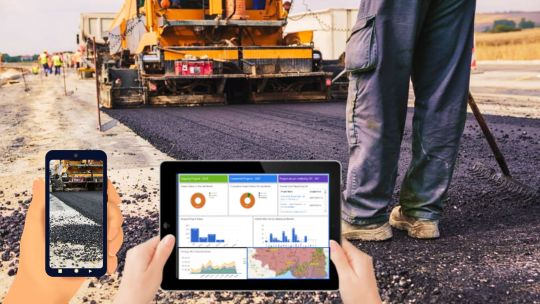
#road construction monitoring software#road project tracking system#csrmonitoringsoftware#road construction progress tracking#gis based road monitoring system#road construction management software#real time road project monitoring#road construction tracking application#construction project tracking system#road project progress monitoring#road asset management software#road construction analytics tools#road infrastructure monitoring system#construction monitoring software for roads#road project planning software#digital road project monitoring system#smart road monitoring solutions#road construction quality monitoring#road project performance tracking#road mapping and monitoring software
0 notes
Text

Heavy Equipment Management Software simplifies the tracking and maintenance of construction equipment. It helps businesses monitor fuel usage, schedule repairs, and track operational hours, reducing downtime and maintenance costs while increasing the lifespan of machinery.
#prestartr#fleet management software#project cost tracking software#civil construction management software#construction software
0 notes
Text
Enhancing Urban Development in Saudi Arabia with DSP Consultants' Acoustic Expertise
As Saudi Arabia experiences a surge in urban and infrastructural development, effective noise control and sound design have become integral to creating sustainable and livable spaces. Acoustic consultants play a vital role in shaping environments that prioritize comfort, productivity, and compliance with regulatory standards. At DSP Consultants, we specialize in offering tailored acoustic solutions for a variety of projects across Saudi Arabia.
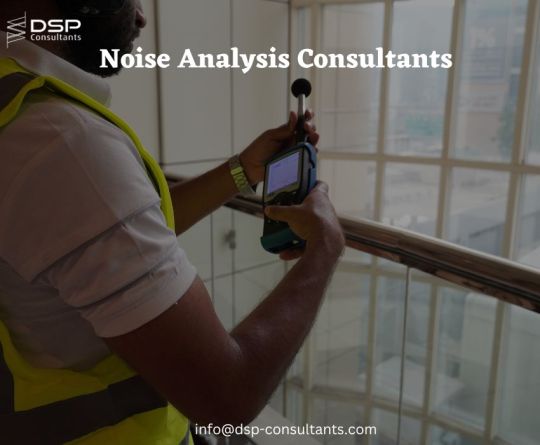
The Role of Acoustic Consultants in Saudi Arabia
Acoustic consultants provide services that go beyond basic noise control, addressing the growing need to mitigate urban noise from traffic, construction, and industrial activities. They utilize cutting-edge technology to ensure projects meet both local and international regulations while enhancing the acoustic quality of indoor and outdoor spaces.
Key Acoustic Services Offered by DSP Consultants
Acoustic Testing and Noise AssessmentDSP Consultants leverages advanced equipment, such as decibel meters and noise modeling software, to assess existing noise levels at project sites. Noise maps and predictive models are developed to evaluate the potential impacts of new developments, ensuring compliance with environmental standards.
Noise Mitigation StrategiesWe design effective solutions to minimize noise pollution, such as:
Installing sound barriers to shield sensitive areas from urban noise.
Incorporating green zones to act as natural buffers.
Optimizing building orientations and material selection for maximum noise reduction.
Building AcousticsOur services include room acoustic design, soundproofing, and HVAC noise control to create quieter indoor environments in residential, commercial, and industrial spaces. Whether it's enhancing speech clarity in meeting rooms or designing home entertainment systems, we deliver customized solutions for optimal acoustics.
Sustainable Acoustic DesignBy aligning with green building initiatives, DSP Consultants promotes the use of eco-friendly materials for sound insulation and vibration control. This approach not only supports environmental sustainability but also ensures long-lasting acoustic efficiency.
The Growing Demand for Acoustic Consulting in Saudi Arabia
As cities like Riyadh, Jeddah, and Dammam expand, the need for comprehensive acoustic consulting is rising. Major projects, including mixed-use developments, high-rise buildings, and transportation hubs, require expert noise management to enhance livability and meet regulatory standards. DSP Consultants has extensive experience working on complex urban developments, ensuring seamless integration of acoustic solutions with architectural and engineering designs.
Why Choose DSP Consultants?
With a proven track record in the Middle East, DSP Consultants is a trusted partner for delivering innovative acoustic solutions tailored to Saudi Arabia’s unique needs. Our experienced team provides:
Detailed Noise Assessments: From environmental impact studies to real-time monitoring.
Specialized Acoustic Modeling: Utilizing tools like CadnaA to visualize and optimize sound management strategies.
Compliance Expertise: Ensuring projects align with Saudi Arabia’s environmental noise regulations.
Creating Sound Solutions for a Better Tomorrow
At DSP Consultants, we believe that sound design is more than just noise reduction—it’s about creating spaces that foster productivity, well-being, and community harmony. From residential areas and commercial hubs to industrial zones, our acoustic expertise enhances the quality of life across Saudi Arabia.
For tailored acoustic consulting services, contact DSP Consultants at [email protected].
2 notes
·
View notes
Text
Top 10 Construction Project Management Software in 2024

The construction project management world is nothing short of dynamic—a whirlwind of project deadlines, tight budgets, safety measures, and constant coordination. Whether you’re managing a bustling commercial complex, a cozy residential building, or an expansive industrial site, keeping everything running smoothly is no small feat.
Thankfully, technology has your back. Construction project management software has become a go-to solution, helping professionals streamline tasks like project planning, resource allocation, budget tracking, document control, collaboration tool, risk management, contract management, vendor relationships, and site inspections. Think of it as your digital project partner, simplifying the chaos and giving you more control.
In this guide, we’ll walk you through 10 standout tools for 2024. Whether you’re a seasoned project manager or just starting out, these solutions are designed to tackle your specific challenges. Let’s dive in and find the one that fits your needs best.
Read the full blog
#Construction Project Management Software#project management#client communication#Gantt charts#project tracking#collaboration tools
0 notes
Text

Ready to revolutionize your construction projects? Magtec's ERP software is here to empower you with advanced analytics, cost tracking, and seamless collaboration. Book a demo today and witness the future of construction management!
#magtec#erp#automation#business#efficiency#software#technology#innovation#digitaltransformation#enterprise#solutions#productivity#success#growth#management#finance#humanresources#supplychain#logistics#cloud#saas#onpremises#hybrid#integration#scalability#customization#support#trustedpartner#magtecerp#magtecsolutions
2 notes
·
View notes